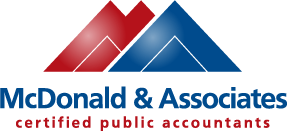7 Common Missing Tax Return Items
Want your tax return filed quickly and without error? Then double-check this list of items that are often overlooked. These missing items often cause delays in getting your tax return filed:
- Forms W-2 and 1099. Using last year’s tax return as a checklist, make sure all your W-2s and 1099s are received and applied to your tax return. Missing items will be caught by the IRS mismatch program. All these forms are required to be in the mail to you on or before Jan. 31. If you are missing a form, contact the company responsible for issuing them.
- Form 1095-A. If you have health insurance through the Health Insurance Marketplace, you will need this form to complete your taxes and potentially claim the Premium Tax Credit. The deadline for employers to distribute other versions of Form 1095 is March 4.
- Dependent information. If you add a new dependent in 2018, provide the name, Social Security number and birth date to have them added to your tax return. If you have a dependent that shares time with someone else, discuss the plan for who is going to claim them. Your tax return cannot be filed if there is conflict in this area.
- Cost/basis information. If you sold any assets (typically investments or real estate), you need to know the cost/basis amount to calculate your taxable capital gain. Check your investment statements to ensure that your broker includes the required information. Often times it’s hard to find on the Form 1099-B summary, but it might be listed later in the statement details.
- Schedule K-1s. As an owner of a partnership or S-corporation, you will need to receive a Form K-1 that reports your share of the profit or loss from the business activity. Because of the new qualified business income deduction (QBID), businesses are required to report more information this year. When you receive your K-1, pay special attention to box 17 (codes V through Z) for S-corporations and box 20 (codes Z through AD) for partnerships. This is where QBID information is included. Without this, you cannot file your tax return.
- Forms or documents with no explanation. If you receive a tax form, but have no explanation for the form, questions will arise. For instance, if you receive a retirement account distribution form it may be deemed income. If it is part of a qualified rollover, no tax is due. An explanation is required to file your information correctly.
- Missing signatures. Both you and your spouse need to review and sign the e-file approval forms before the tax return can be filed. The sooner you review and approve your tax return, the sooner it can be filed.
By knowing these commonly missed pieces of information, hopefully your tax filing experience will be a smooth one.



